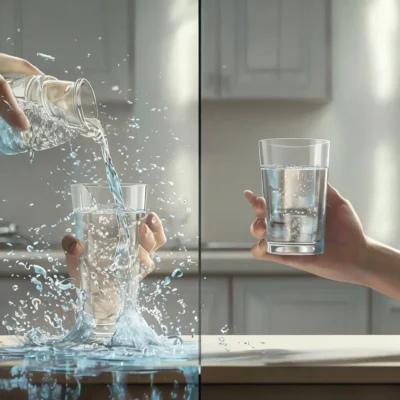The Perception of Motion: A Window into the Brain’s Wonders
As winter descends upon us, the world around us changes gradually. Recently, I heard the surprising news that even Egypt experienced snowfall. As I reflect on these seasonal shifts, my thoughts turn to the fascinating realm of human perception.
As a hypnotic creator, I, Tamura, am constantly amazed by the intricacies of the human mind and brain. One aspect that particularly intrigues me is our ability to perceive motion – something we often take for granted.
Have you ever wondered how we recognize that objects are moving? It’s a complex process that involves our brain’s ability to perceive both position and the passage of time. This seemingly simple task is actually a remarkable feat of neural processing, primarily handled by a specific region in our brain called the MT+ area.
The MT+ area plays a crucial role in our perception of motion. When this area is damaged or impaired, it can lead to a condition where individuals struggle to accurately perceive movement. This condition offers us a unique insight into the workings of our brain and the nature of visual perception.

Imagine trying to pour water into a glass but being unable to stop at the right moment, causing the water to overflow. This is precisely what can happen to individuals with damage to their MT+ area. They can see the glass, recognize its shape and color, even identify faces around them, but they cannot accurately perceive the motion of the water being poured.
This disconnect between object recognition and motion perception is truly fascinating. It demonstrates that our ability to ‘see’ is not a single, unified process but rather a complex interplay of different perceptual abilities. The fact that someone can recognize objects and faces but struggle with perceiving motion highlights the specialized nature of our visual processing systems.
This phenomenon also underscores the intimate relationship between vision and our perception of movement. When we observe the world around us, we’re not just passively receiving visual information. Our brains are actively interpreting and making sense of this information, including the movement of objects in our environment.
The implications of this are far-reaching. Consider how crucial motion perception is in our daily lives. From simple tasks like pouring a drink or crossing a busy street, to more complex activities like driving a car or playing sports, our ability to perceive and predict motion is fundamental to our interaction with the world.
Moreover, this understanding of motion perception has significant implications for fields such as neuroscience, psychology, and even artificial intelligence. By studying how the brain processes motion, researchers can gain insights into the broader workings of visual perception and cognition.
As a hypnotic creator, I find this knowledge particularly valuable. Understanding the intricacies of perception can inform how we approach various therapeutic techniques. For instance, in hypnotherapy, we often use visual imagery to help clients achieve a state of relaxation or to work through certain issues. Knowing how the brain processes visual information, including motion, can help us craft more effective and impactful hypnotic experiences.

But beyond its practical applications, I believe there’s something profoundly awe-inspiring about understanding these aspects of our brain’s function. It reminds us of the incredible complexity of our cognitive processes and the marvels of human perception.
As we go about our daily lives, our brains are constantly at work, processing vast amounts of sensory information and allowing us to navigate our world seamlessly. The next time you watch a bird in flight or catch a ball, take a moment to appreciate the intricate neural processes that make these perceptions possible.
In these cold winter days, as we observe the slow dance of snowflakes or the swift movement of people hurrying to get out of the cold, we’re witnessing our brain’s remarkable ability to perceive motion in action. It’s a testament to the wonders of human cognition, operating silently yet powerfully in the background of our consciousness.
So, the next time you pour yourself a warm cup of coffee, pay attention to how effortlessly you stop pouring at just the right moment. It’s a simple act, but one that showcases the incredible capabilities of your brain’s motion perception system.
As we continue to unravel the mysteries of the human brain, we open up new possibilities for understanding ourselves and the world around us. And in doing so, we may find new ways to enhance our cognitive abilities and improve our quality of life.
In the realm of hypnotherapy and cognitive science, these insights offer exciting avenues for exploration and application. At HypnoticCafe, we’re always eager to incorporate the latest scientific understanding into our practices,aiming to provide the most effective and scientifically-grounded experiences for our clients.

As we delve deeper into the workings of the human mind, we continue to be amazed by its complexity and capability. The study of motion perception is just one small piece of the vast puzzle that is human cognition. Yet, it offers us profound insights into how we experience and interact with the world around us.
In conclusion, the next time you find yourself marveling at a beautiful sunset or watching a thrilling sports match, remember the incredible neural processes that allow you to perceive these motions. Our brains truly are wonders of nature, constantly working to help us make sense of the dynamic world we inhabit.
As hypnotic creator Tamura, I invite you to join me in this ongoing exploration of the mind’s capabilities. Together, we can unlock new potentials and deepen our understanding of human perception and cognition.



Comments